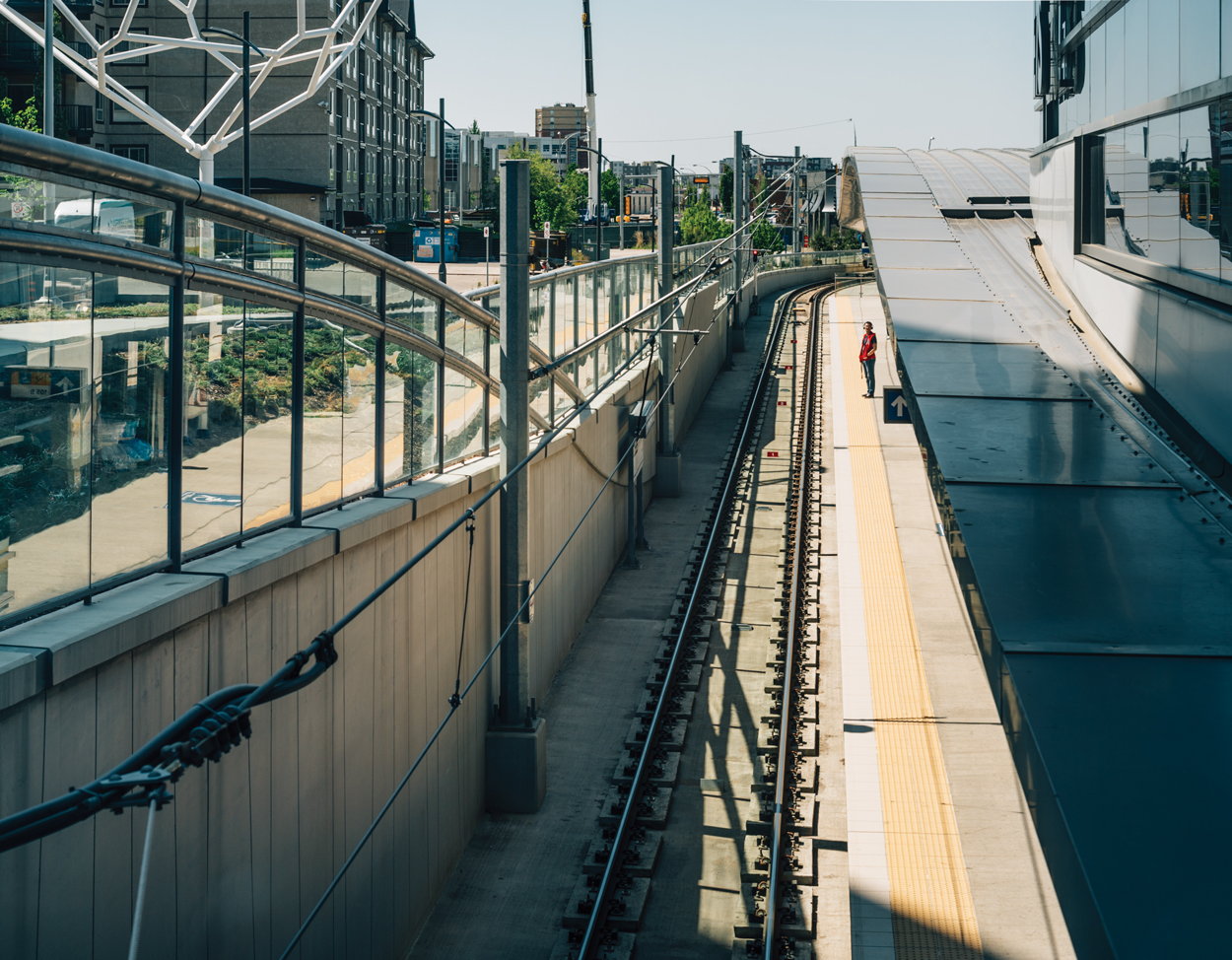When it comes to who is going to be the next mayor of Edmonton, how we get around is a hot-button issue — and that was clear at the Downtown Business Association’s mayoral debate, held Thursday at Ford Hall.
The five mayoral candidates on stage were asked about Edmonton’s downtown infrastructure, and that conversation spun into transit, roads and — everyone’s favourite — construction projects. Yes, the candidates spoke about more than just transportation — they touched on downtown cleanliness, how the City will access funds and opioids. But, when it comes to an issue that quickly gets the electorate to pay attention, talk about the orange blockades and fences that cut off our sidewalks and roads. Talk about slalom driving or cycling between concrete barriers, or trying to figure out which side of the pylons is where you’re supposed to drive.
Promise to cut traffic? To penalize contractors for finishing projects late? How about a transit system that never breaks down? These are discussions that get voters to listen.
Michael Oshry
Former city councillor Michael Oshry said that if the city is not going to make it easier for Edmontonians to get downtown, the core will not thrive.
“If people come down by any means, we need to make sure they’re able to.” And, he made sure not to vilify drivers, noting that 70 per cent of the people who make trips downtown do so by taking their personal vehicles.
He stressed that debating the LRT expansion to the west end is no longer on the table. The land has been secured, and the contracts have been signed. So, the focus for the city’s next mayor has to be about ensuring the LRT expansion is going to be the best it can be.
“We have to get these things right, because we need to fill these buildings downtown.”
Cheryll Watson
Cheryll Watson, the former head of Innovate Edmonton, said she is frustrated by the sheer amount of unfinished road projects.
“It seems like the entire city is under construction right now,” she said. Watson argued that the City needs to do a better job coordinating and managing projects, to ensure that some parts of the city don’t get jammed up because two or three projects are encroaching on one another. “We need to realize the city doesn’t stop moving.”
